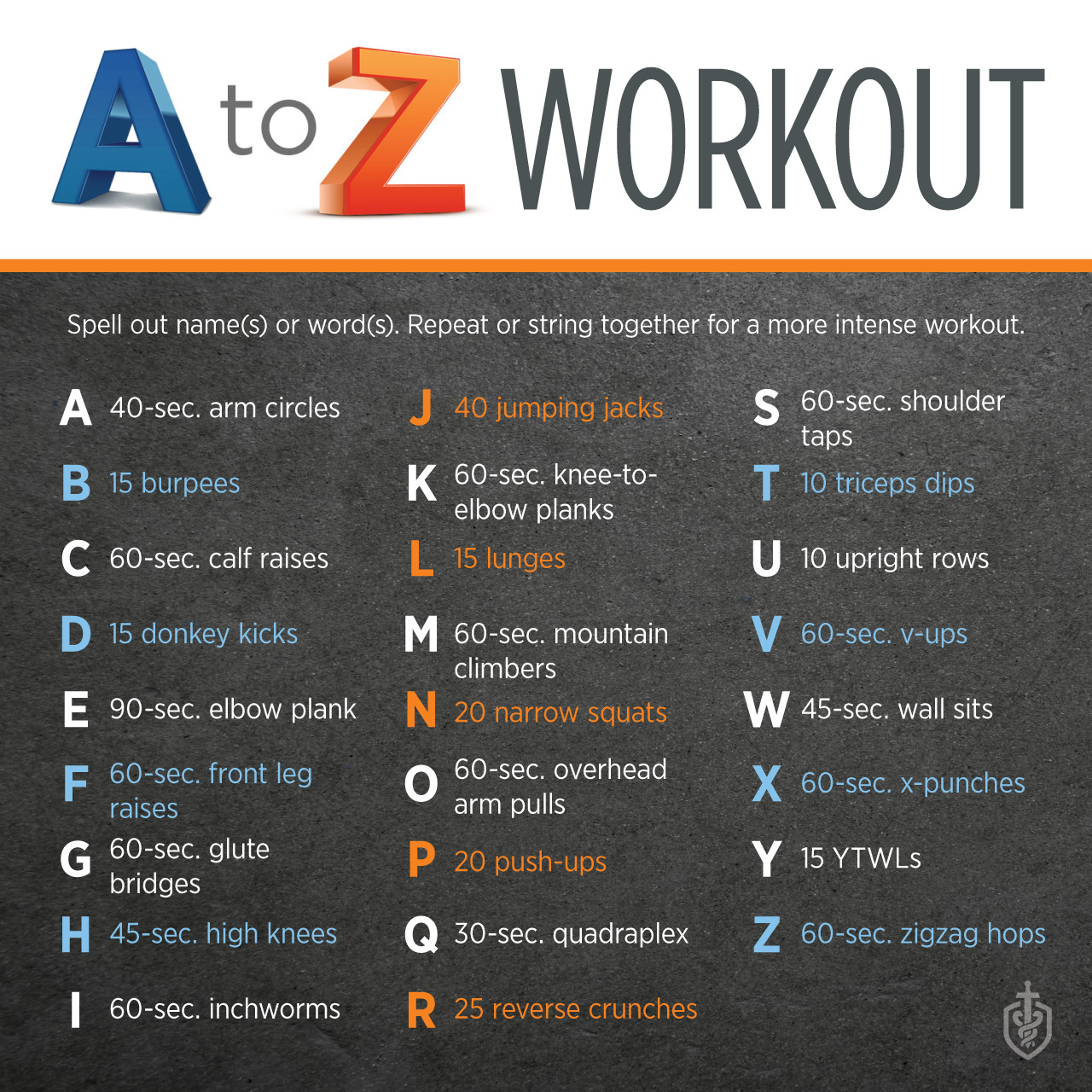Exercise starts with a commitment to your health and well-being. Developing a consistent routine is key to achieving fitness goals.
Regular exercise is essential for maintaining a healthy lifestyle. It boosts physical health, mental well-being, and overall quality of life. A well-structured exercise routine can improve cardiovascular health, strengthen muscles, and enhance flexibility. It also helps in weight management and reduces the risk of chronic diseases.
Starting with small, manageable goals can make the process less daunting. Find activities you enjoy to stay motivated and engaged. Consistency is more important than intensity at the beginning. As you progress, gradually increase the duration and intensity of your workouts. Remember, the fitness journey is a marathon, not a sprint. Prioritize your health and make exercise a daily habit.
The Power Of Starting Small
Embarking on a new exercise routine can feel overwhelming. The secret to success lies in starting small. Small steps lead to big changes over time. This approach makes fitness achievable for everyone. Let’s explore how tiny habits can make a major impact.
The One-minute Rule
Commit to exercising for just one minute. Everyone has a spare minute. This rule removes excuses and gets you moving. Start with simple activities like jumping jacks or squats. You can gradually increase the time as it becomes a habit. The key is consistency, not duration.
Mini Habits, Major Impact
Mini habits are easy to start and maintain. They require minimal effort but offer significant benefits. Here are some examples:
- Walking for five minutes daily
- Stretching while watching TV
- Doing 10 push-ups before bed
These small actions add up over time. You build confidence and momentum. Soon, you’ll find yourself doing more without thinking about it.
Table Of Mini Habits
| Activity | Duration | Frequency |
|---|---|---|
| Walking | 5 minutes | Daily |
| Stretching | During TV time | Daily |
| Push-ups | 10 reps | Before bed |
Remember, the goal is to start small. Consistent small efforts lead to lasting results. Keep moving forward, one tiny step at a time.
Identifying Your ‘why’
Identifying your ‘why’ is the first step in starting the exercise. Knowing why you want to exercise helps you stay motivated. It keeps you focused on your goals.
Personal Goals And Values
Each person has unique goals and values. These guide our actions and choices. Understanding your personal goals can help shape your exercise routine.
- Do you want to lose weight?
- Are you aiming for better health?
- Is building muscle your aim?
Your values also play a role. If you value family, you might exercise to stay healthy for them. If you value adventure, you might train for hiking or travel. Knowing your goals and values makes exercise meaningful.
Long-term Vision And Benefits
Think about your long-term vision. Where do you see yourself in a year? Five years? Long-term goals keep you motivated. They give you something to aim for.
The benefits of exercise are many. Here are some key benefits:
| Benefit | Description |
|---|---|
| Better Health | Regular exercise reduces the risk of many diseases. |
| More Energy | Exercise boosts your energy levels throughout the day. |
| Improved Mood | Working out releases endorphins that make you feel good. |
| Better Sleep | Exercise helps you sleep better at night. |
Knowing these benefits can help you stay committed. They remind you why you started. They keep you going on tough days.
Creating An Exercise Blueprint
Starting an exercise routine can be daunting. Having a clear plan makes it easier. This section will help you create a detailed exercise blueprint. Follow these steps for a successful workout journey.
Setting Realistic Goals
Goals are essential for progress. Set goals that are realistic and achievable. Begin with small targets. Gradually increase difficulty. For example:
- Walk for 10 minutes daily
- Do 5 push-ups a day
- Run a mile in 3 months
Write down your goals. This will help you stay focused. Track your progress weekly. Adjust your goals as you improve.
Designing Your Workout Routine
Your workout routine should be balanced. Include exercises for different muscle groups. A balanced routine might look like this:
| Day | Activity | Duration |
|---|---|---|
| Monday | Cardio | 30 minutes |
| Tuesday | Strength Training | 45 minutes |
| Wednesday | Yoga | 30 minutes |
| Thursday | Cardio | 30 minutes |
| Friday | Strength Training | 45 minutes |
| Saturday | Rest | – |
| Sunday | Stretching | 30 minutes |
Mix cardio, strength, and flexibility exercises. This ensures a well-rounded fitness level. Change your routine every few weeks. This prevents boredom and promotes muscle growth.
Remember to warm up before and cool down after each session. Stay hydrated and listen to your body. Consistency is key for long-term success.

Credit: www.pinterest.com
Overcoming Mental Blocks
Starting an exercise routine is tough. Mental blocks make it harder. Overcoming these obstacles is key to success.
Challenging Negative Thoughts
Negative thoughts stop progress. They say, “You can’t do it.” Challenge these thoughts. Replace them with positive ones.
- Think: “I am strong.”
- Say: “I will try my best.”
- Believe: “I can improve.”
Keep a journal. Write down your thoughts. Track your progress. This helps in seeing growth over time.
Building Mental Resilience
Mental resilience helps you push through. It keeps you going when things get tough. Practice makes it stronger.
| Activity | Benefit |
|---|---|
| Meditation | Reduces stress |
| Mindfulness | Increases focus |
| Deep Breathing | Calms the mind |
Stay consistent. Small steps lead to big changes. Build your mental strength daily.
Harnessing External Motivators
Many people struggle to start and maintain an exercise routine. External motivators can play a crucial role in overcoming these challenges. These motivators can provide the push needed to get moving and stay committed. Let’s explore some effective external motivators to boost your fitness journey.
Social Support Networks
Having a strong social support network can significantly impact your exercise routine. Friends, family, and coworkers can encourage you to stay active. They can join you in workouts, making exercise more enjoyable. You can also share your fitness goals and achievements with them.
- Find a workout buddy.
- Join a fitness group or class.
- Share progress on social media.
Social support can keep you accountable. It can also provide emotional support during tough times.
Incentives And Rewards
Incentives and rewards can be powerful motivators. Setting small, achievable goals and rewarding yourself can keep you motivated. Rewards can be anything you enjoy, such as a favorite treat or a new fitness gadget.
- Set a weekly exercise goal.
- Reward yourself with a small treat.
- Track your progress and celebrate milestones.
Rewards make the journey fun and give you something to look forward to. They help reinforce positive behavior and keep you motivated.
Tracking Progress And Celebrating Wins
Tracking your progress and celebrating wins can make exercise more rewarding. Both elements help maintain motivation and focus.
Monitoring Your Journey
Use a fitness journal to track workouts. Record your exercises, reps, and sets.
Apps can be helpful. Many apps track steps, calories, and more.
Wearable devices like fitness trackers can give real-time updates. They monitor heart rate, sleep, and daily activity.
Create visual aids like charts or graphs. These tools show growth over time.
Review your progress every week. This practice helps adjust goals and methods.
Acknowledging Milestones
Celebrate small wins. Small victories can boost your morale.
- Completed a week of workouts? Treat yourself to a favorite snack.
- Run your first 5K? Share the news with friends.
- Hit a new personal best? Document it in your fitness journal.
Rewards can be non-food related too. New workout gear or a relaxing bath can be great incentives.
Remember, every step forward is progress. Each milestone builds momentum.
Staying Consistent Amidst Challenges
Staying consistent with exercise is tough. Life throws many challenges. These hurdles can derail your fitness goals. But maintaining a routine is essential. Staying committed requires strategies to handle setbacks and adapt to changes.
Coping With Setbacks
Setbacks are inevitable. Injury, illness, or busy schedules can disrupt routines. It’s important to stay positive. Focus on what you can control.
- Set Realistic Goals: Aim for achievable milestones. Small wins boost confidence.
- Stay Flexible: Adjust your workouts. A short session is better than none.
- Seek Support: Join a community. Friends can motivate you to stay on track.
Adapting To Life Changes
Life changes can be challenging. Moving, new jobs, or family additions can disrupt routines. Adaptability is key to maintaining consistency.
| Life Change | Adaptation Strategy |
|---|---|
| New Job | Schedule workouts around your new routine. |
| Moving | Explore new local gyms or parks. |
| Family Additions | Incorporate family-friendly activities. |
Plan Ahead: Anticipate changes. Prepare strategies to stay active.
Stay Motivated: Keep your goals in mind. Visualize your success.
Inspiring Stories Of Transformation
Exercise has the power to transform lives. Real people have achieved amazing results. These stories show the power of dedication and hard work.
Real-life Success Cases
Meet John. He lost 50 pounds in one year. He started with simple walks. Soon, he added jogging and weight training. Now, he runs marathons.
Another story is of Emily. She was once scared of the gym. She joined a community fitness class. Over time, she gained confidence. Today, she is a certified fitness trainer.
These stories inspire many. They show that anyone can change their life.
Lessons Learned From Others’ Journeys
From these stories, we learn valuable lessons. First, consistency is key. John and Emily stayed committed. They did not give up.
Second, start small and build up. John began with walking. Emily started with group classes. Small steps lead to big changes.
Third, find a support system. Emily found help in her fitness class. John’s family supported him. Support makes the journey easier.
These lessons can help anyone. Remember to stay committed. Take small steps. Find support. Your transformation story can inspire others too.

Credit: www.pinterest.com
Frequently Asked Questions
What Exercise Starts With Ap?
The exercise that starts with “AP” is “App crunches. ” This workout targets your abdominal muscles effectively.
What Exercises Start With Aw?
Exercises that start with “aw” include “awkward pose” and “awareness exercises. ” These activities focus on balance and mindfulness.
What Is A Starter Exercise?
A starter exercise is a low-intensity activity to warm up muscles and prepare the body for more strenuous workouts.
What Workout Do You Start With?
Start with a 5-10 minute warm-up, like brisk walking or light jogging. Then, do bodyweight exercises such as squats, push-ups, and lunges.
Conclusion
Starting your exercise journey is the first step towards a healthier life. Consistency is key for lasting results. Keep motivated and set achievable goals. Remember, every small effort counts. Make exercise a daily habit, and enjoy the benefits. Prioritize your health and well-being today.






Comments are closed.